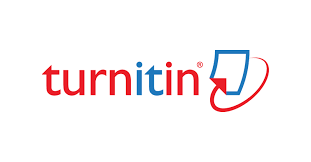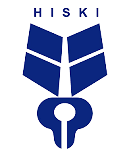Improving Literacy Skills of Students with Different Learning Styles Using E-6tslearning
Abstract
This research was aimed at describing what learning styles dominate the students' reading and writing abilities and how E-6tslearning improve the the fourth semester students’ reading and writing skills of the English Language Education Study Program of Teacher Training and Education Faculty of Pekalongan University. The writer used classroom action research (CAR) with 28 students as samples. The writer used planning, acting, observing and reflecting cycles. The writer used questionnaires to determine students’ learning styles and their satisfaction with the use of E-6tslearning and tests to measure their reading and writing skills. The results of the questionnaire analysis showed that there were three learning styles; those were visual, auditory and kinesthetic. From the results of the comparison of pre-test and post-test, students with kinesthetic learning styles experienced the best improvement of all, the visual group was the second one and the auditory group got the lowest achievement. The results of the pre-test and post-test comparison show an improvement in students' skills and motivation. This proves that the use of e-6tslearning can improve students' reading and writing skills. The results of the questionnaire analysis of student satisfaction on the use of e-6tslearning shows that learning by using e-6tslearning, students can improve their reading and writing skills and digital literacy. They can learn with fun with and without lecturer’s assistance.
References
Boekaerts, M. (2016). Motivation to Learn. International Academy of Education. Retrieved from http://www.curtin.edu.au/curtin/dept/smec/iae.
Chandra, V., & Lloyd, M. (2008). The Methodological Nettle: ICT and Students’ Achievement. British Journal of Educational Technology, 39(6), 1087-1098.
Hopkins, D. (1993). A Teacher’s Guide to Classroom Research. Philadelphia. Open University Press.
Gilbert, J., Morton, S., & Rowley, J.(2007). Learning: The Students’ Experience. British Journal of Educational Technology, 38(4), 560-573.
Hartanto, W. (2016). Penggunaan E-Learning Sebagai Media Pembelajaran. Jurnal Pendidikan Ekonomi. Volume 10 No (1). Retrieved from https://jurnal.unej.ac.id/index.php/JPE/article/view/3438.
Hossain, M. I. (2015). Teaching Productive Skills to the Students: A Secondary Level Scenario. Department of English and Humanities: BRAC UNIVERSITY. Retrieved from https://core.ac.uk/download/pdf/74352632.pdf.
Liu, T. Y. & Chu, Y. L. (2010). Using Ubiquitous Game in an English Listening and Speaking Course: Impact on Learning Outcomes and Motivation. Computers & Education, 55, 630-64.
Manikowati & Bharati, D. A. L. (2017). The Effectiveness of Multimedia in Teaching Writing to Students with Different Learning Styles. English Education Journal 7 (2), 85-91. Retrieved from http://journal.unnes.ac.id/sju/index.php/eej.
Narmaditya, B. S, Winarning., Wulandari, D. (2017). Impact of Problem-Based Learning on Students’ Achievement in Economics Course. Classroom Action Research Journal. Volume 1 (1). Retrieved from http://journal2.um.ac.id/index.php/carjo.
Pacuilla, H. S. (2008). Investigating the Language and Literacy Skills Required for Independent Online Learning. Maryland : The International Institute for Literacy.
Ranaweera, P. (2008) Importance of Information Literacy Skills for an Information Literate. NACLIS. Retrieved from http://eprints.rclis.org/11956/.
Rosari, L., & Mujiyanto, J. (2016).The Effectiveness of Know-What – Learned and Collaborative Strategic Reading Strategies to Teach Reading Comprehension to Students with Positive and Negative Attitude. English Education Journal.6 (2). Retrieved from http://journal.unnes.ac.id/sju/index.php/eej.
Susan, S., Warsono, W., Faridi, A. (2020). The Evaluation of Exercises Compatibility Between Revised Bloom’s Taxonomy and 2013 Curriculum Reflected in English Textbook. English Education Journal 6 (1). Retrieved from http://journal.unnes.ac.id/sju/index.php/eej.
Sudiran & Prasetiyowati, E. (2014). The Implementation of Media in Teaching English for Young Learners (EYL). Celtic Journal, 1 (1), 1-15.
Valerio, K. (2012). Intrinsic Motivation in the Classroom. Journal of Student Engagement: Education Matters. Volume 2, Issue 1, article 6. Retrieved from https://ro.uow.edu.au/jseem/vol2/iss1/6/.
Wong, L. C., & Nunan, D. (2011). The Learning Styles and Strategies of Effective Language Learners. Journal System, 39, 144-163.
Authors who publish with Jurnal Ilmiah Lingua Idea agree to the following terms:
- Authors retain copyright and grant the journal right of first publication with the work simultaneously licensed under a Creative Commons Attribution License (CC BY-SA 4.0) that allows others to share the work with an acknowledgment of the work's authorship and initial publication in this journal.
- Authors are able to enter into separate, additional contractual arrangements for the non-exclusive distribution of the journal's published version of the work (e.g., post it to an institutional repository or publish it in a book), with an acknowledgment of its initial publication in this journal.
- Authors are permitted and encouraged to post their work online (e.g., in institutional repositories or on their website) prior to and during the submission process, as it can lead to productive exchanges, as well as earlier and greater citation of published work.






















.png)






